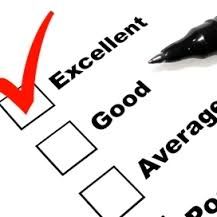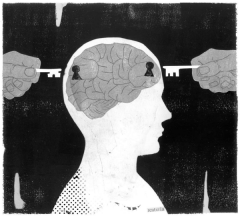![]()
![]()
![]()
Use LEFT and RIGHT arrow keys to navigate between flashcards;
Use UP and DOWN arrow keys to flip the card;
H to show hint;
A reads text to speech;
11 Cards in this Set
- Front
- Back
|
MEASURES OF RETENTION |
A measure of retention is a way to determine how much information has been retained. There are three main kinds of measures.
|
|
|
RECALL |
Involves reproducing information stored in memory. Different types of recall includes:
Free recall - reproducing as much information as possible in no paticular order. For example remembering the homework you have for your subjects.
Serial recall - involves reproducing information in the order in which it was represented. For example remembering your exam dates in order.
Cued recall - involves the use of specific prompts to aid retrieval and thus reproduction of the information required. For example using cue cards to revise psychology. |
|

RECOGNITION |
Involves identifying the correct information from among alternatives. Provides more information than recall because there are more cues. |
|
|
RELEARNING |
Involves learning information again that has been previously learned and stored in LTM. If the information is learned more quickly the second time it is assumed that some information has been retained.
|
|
|
RELATIVE SENSITIVITY OF MEASURES OF RETENTION |
The sensitivity of a measure of retention refers to its ability to assess the amount of information that has been stored in memory.
Research evidence shows that recall is the least sensitive, followed by recognition than relearning. |
|
|
CONTEXT DEPENDENT CUES |
They are environmental cues in the specific situation where a memory was formed that act as retrieval cues to help access the memories formed in that context. For example research shows that exams results are better if they took the test in the same room in which they learnt the material. |
|
|
STATE DEPENDENT CUES |
They are associated with an individual's internal physiological or psychological state at the time the memory was formed, and act as retrieval cues to help access those memories.
You are more likely to remember certain information if you are experiencing the same feeling as you did when you first learned the information. |
|
|
IMPROVEMENT OF MEMORY |
Mnemonic devices - a technique to improve memory in which information already stored in LTM is used to help us remember new information.
Acronyms - a mnemonic device in which pronouncable words are formed from the first letter of a sequence of words. For example, ANZAC.
Acrostics - also known as the first letter technique involves making verbal associations for items to be remembered for by constructing phrases or sentences using the first letters of the information to be remembered. For example, Every Good Boy Deserves Fruit.
Narrative chaining - involves linking otherwise unrelated items to one another to form a meaningful sequence or story. For example remembering a random list of words, you can make a story out of it to enhance retention.
|
|

MANIPULATION OF MEMORY |
Individuals actively reconstruct memory as it is filtered by our thoughts, attitudes and beliefs and is our own perception of an event that can be tampered with. |
|
|
LEADING QUESTION |
A question that has content or is phrased in such a way as to suggest what answer is desired or to lead to the desired answer.
For example if you witnessed a car crash and they asked you, how fast was the car going when it ran the stop sign? This is a leading question because it contains a presupposition, which is information that should or must be true in order for the question to make sense. The question assumes that there is a stop sign. |
|
|
EXPERIMENTS BY ELIZABETH LOFTUS |
Her experiments have shown that people can experience source confusion, which arises hen the true source of the memory is forgotten or when a memory is attributed to the to the wrong source.
Also eyewitness memories can be altered by post-event exposure to inaccurate information introduced during questioning.
Loftus model of recall is different to the traditional model, in that that it takes into account that we reconstruct memories. |

